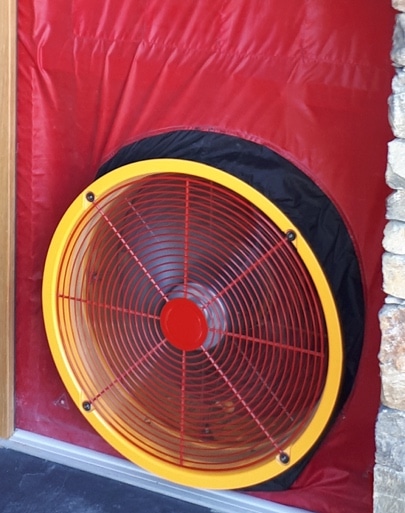Airtightness and hygrothermal design in Passivhaus buildings & EECN
Start date: to be confirmed
Final date: to be confirmed
What materials can I use to meet the demanding air tightness requirements of the Passivhaus standard? What vapor diffusion resistance factor should a vapour barrier have? What if it’s a vapour retarder? How can I avoid moisture damage in my building through good hygrothermal design? I am in a radon gas zone: what do I need to do to stop radon gas entry into the building?
Find the answers to these and many more questions, in this course dedicated to one of the cornerstones of the Passivhaus standard, and one of the key aspects in the construction of sustainable, healthy, and comfortable buildings: the elimination of air infiltration and correct vapour control and moisture management.
Airtightness and hygrothermal design in Passivhaus buildings & EECN
325,00€
Start date: to be confirmed
Final date: to be confirmed
What materials can I use to meet the demanding air tightness requirements of the Passivhaus standard? What vapor diffusion resistance factor should a vapour barrier have? What if it’s a vapour retarder? How can I avoid moisture damage in my building through good hygrothermal design? I am in a radon gas zone: what do I need to do to stop radon gas entry into the building?
Find the answers to these and many more questions, in this course dedicated to one of the cornerstones of the Passivhaus standard, and one of the key aspects in the construction of sustainable, healthy, and comfortable buildings: the elimination of air infiltration and correct vapour control and moisture management.
Description
The requirements of the Passivhaus standard regarding airtightness are stringent but clear. Meanwhile, national regulations are becoming increasingly demanding, and you may need to catch up! Creating healthy and regenerative indoor spaces is clearly in the spotlight and on the agenda: a building with moisture problems, drafts, humidity, and high maintenance costs is no longer an option!
Whether you are a certified Passivhaus Designer or Tradesperson looking for a refresher course, or new to the field of airtightness and vapour control, the course gives you the tools you need for basic design and site supervision, for a range of construction systems, in both warm and temperature climates. Through 2 live sessions in a 100% online learning environment, you will be able to interact with teachers and peers, download and read technical documents to consolidate what you’ve learnt, and watch recordings of the live sessions after the classes. The course has been validated by the Passivhaus Institute in Germany, so if you are a certified Passivhaus Designer/Consultant or Tradesperson, you can win Credit Points with this course for your qualification renewal!
- Start date: to be confirmed
- Final date: to be confirmed
- Total time commitment: 20 hours
- Course period: 2 weeks
- Live sessions: 2 sessions of 4h c/u, 16:00 h – 20:00 h CET (see content below)
- Certificate of attendance
- Course validated by the Passivhaus Institute, with 24 Credit Points for the renewal of Passivhaus Designer/Consultant, or Passivhaus Tradesperson qualifications
- Online learning environment:
- Forum / chat for networking & interaction with teachers & peers
- Technical Documents to download
- Final test (multiple choice)
Content
Introduction
- Course structure
- Why build airtight and take care of hygrothermal design? Comfort, health, protection against radon gas, acoustics, energy efficiency, pathologies, and maintenance; Passivhaus requirements
- Factors to consider in hygrothermal design: interior hygrometry & exterior climatology; heat transfer & humidity; air tightness, condensation & air quality; ventilation
Air tightness
- Key concepts: How do in/exfiltrations occur?; measurement, Blower Door testing and detection tools; influence of air infiltration on energy losses
- International Standards and national Regulations
- 7 steps for building airtight buildings
- 7 material groups for air tightness, assessed by 5 criteria
- 5 types of bonding/joining materials
- Blower Door test & quality control: key points to pass the test
Hygrothermal design & vapor control
- Key concepts: humidity in buildings; moisture transport; waterproofing; thermal bridges; air in/exfiltrations; ventilation
- Indoor & outdoor water vapour pressure in Winter & Summer
- International Standards and national Regulations
- Units for quantifying vapor resistance & conversions
- Definition of a vapour permeable material / vapour retarder / vapor barrier / dynamic vapour control
- Vapor resistance measurement in the laboratory
- 7 recommendations for a good hygrothermal design
- 7 types of materials for vapour control, rated according to their vapour resistance, with installation examples
- Calculation tools: simplified method Glaser vs. transient analysis with WUFI
- Hygrothermal design for retrofitting of buildings

